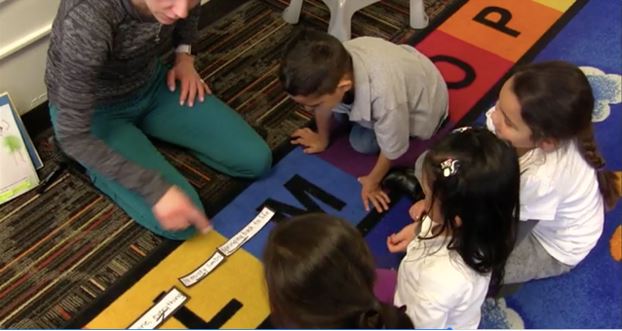
Articles Tagged with “ELA / Literacy”
Sort by

Unlocking the Power of Aligned Materials

What to Do When Curricular Materials for ELLs Are Not Available

How Core Knowledge Supports CCSS-Aligned Instruction

CCSS-Aligned Materials for ELL Students

Criteria for Curricular Materials Labeled as Appropriate for ELLs


The Shifts and ELLs

Common Confusions about CCSS-Aligned ELA Materials

Customizing the IMET PD Training for a Local Setting

A Teacher’s Thoughts on the Core Knowledge Language Arts Curriculum

Creating a Conducive Environment for Teachers to Adapt Materials

Why We’re Choosing Instructional Materials Blindly

Using Complex Texts with All Readers

Decision-Making that Matters: 10 Ways Teachers Can Impact Curricular Decisions

Top Five Ways to Improve Your Basal Reading Program

Choosing Wisely: A Strategic Approach to Curriculum in Duval County

A Publisher’s View on the Changing Instructional Materials Landscape

Creating Full-Course Open Educational Resources (OER)

Outcomes of the Adaptation Process

Adapting Basal-Based Literacy Programs

Including Tier 2 Vocabulary Instruction in Curricular Materials

Call for Common Core-Aligned Units

The EQuIP Review Process and Rubric

K-12 OER Collaborative’s Request for Proposals

Working Together to Create Open Educational Resources

What Needs to Change in Instructional Materials: ELA

Six Instructional Materials Articles You Should Be Reading

IMET Evolution: ELA/Literacy

An Introduction to the Adapting Materials Project

Publishing Review Results

Traditional Reviews vs. the IMET

Teachers Create Lessons and Adaptations to Strengthen ELA Learning

ELA in the Common Core Classroom

Building a Review Team that Represents Students and Supports Teachers

Open Educational Resources in Action

Introduction to Open Educational Resources

Lament of a Review Team Member

Introduction to the Publishers’ Criteria for ELA/Literacy



Reviewing Is a Journey and the Benefits Aren’t What We’d Expected

How Reviewing Materials Changed My Classroom Practice

When to Use the IMET

Should We Bother with Other People’s Reviews?

Building the Right Review Team


Top 5 Tips for Building and Training Your Review Team

What My District Gained From Collaboration

Knowing the Common Core = Knowing the Shifts

If You’re Not Purchasing, Should You Still Review?

Working Toward Alignment

Searching for Aligned Materials Doesn’t Have to Be Lonely

New Standards, New Approach to Reviews

Instructional Materials Evaluation Tool (IMET)














